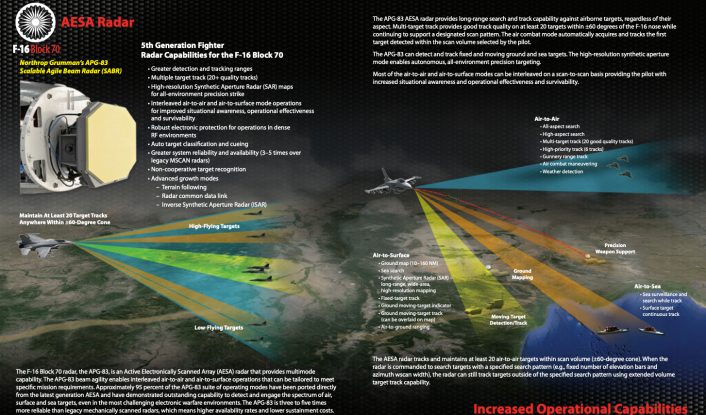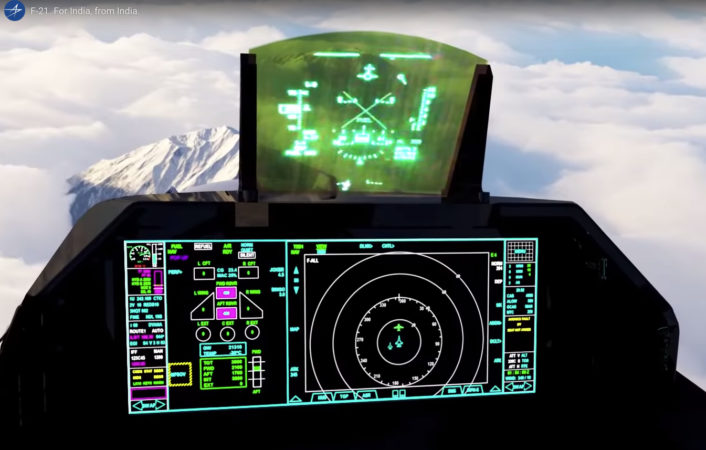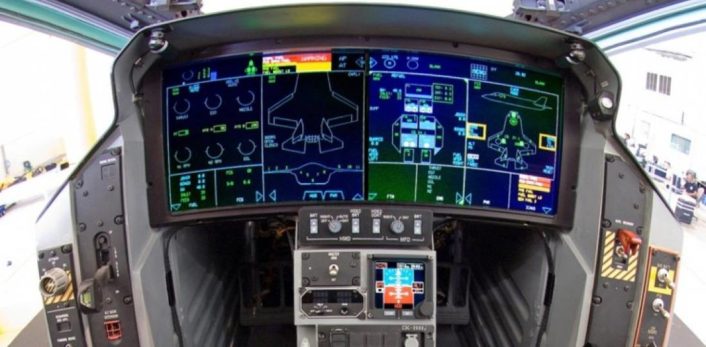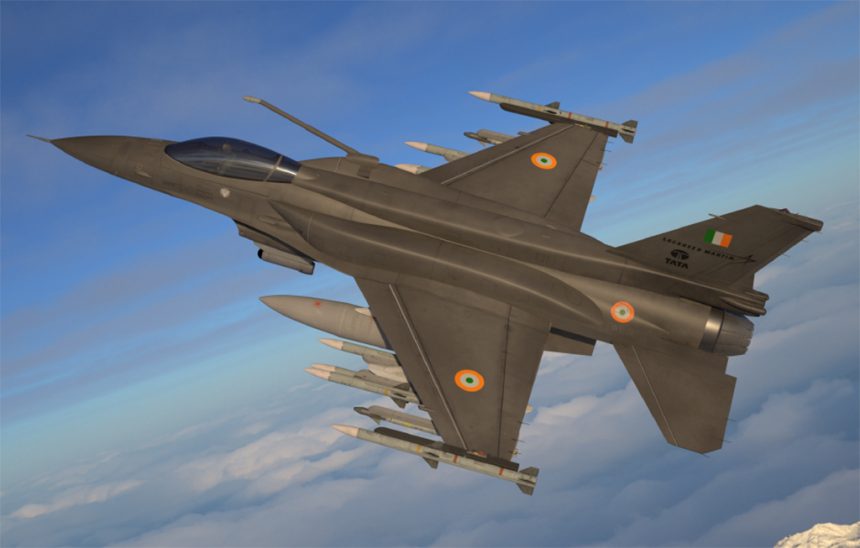The “new” F-21 takes the spotlight at Aero India 2019.
Lockheed Martin has just unveiled the new jet the giant U.S. defense company is offering India in response to the Indian Air Force’s RFI (Request For Information) for 110 fighters, worth over 15B USD.
Dubbed F-21 (a designation used by the IAI Kfir in US service) and introduced by the slogans “Make in India” and “India’s Pathway to F-35”, the aircraft would be built locally in partnership with India’s Tata Advanced Systems.
“The F-21 is different, inside and out,” Vivek Lall, vice president of Strategy and Business Development for Lockheed Martin Aeronautics, said in a statement. However, the aircraft, that would be “specially configured to address the Indian Air Force’s unique requirements and integrates India into the world’s largest fighter aircraft ecosystem with the world’s pre-eminent defence company”, appears to be an enhanced F-16 Block 70, a configuration upgrade of the F-16V, “the most technologically advanced 4th generation fighter in the world” that made its first flight on Oct. 16, 2015, that is an evolution of the proven F-16 Mid-Life Update (MLU) and Common Configuration Improvement Program (CCIP) and that was already pitched to India in the past.
The Block 70 upgrades included an AESA (Active Electronically Scanned Array) radar, a modern commercial off-the-shelf (COTS)-based avionics subsystem, the AN/APX-126 Advanced IFF, the Joint Helmet Mounted Cueing System II, CFT (Conformal Fuel Tanks); and a high-volume, high-speed data bus as well as other baseline features such as a Link-16 Theater Data Link, Sniper Advanced Targeting Pod, advanced weapons, precision GPS navigation, and the Automatic Ground Collision Avoidance System (Auto GCAS).
One of the most interesting upgrades of the Block 70 to the baseline F-16s is the Northrop Grumman’s advanced APG-83 AESA radar, that enables greater detection and tracking ranges, multiple target track (20-plus target tracks), high-resolution Synthetic Aperture Radar (SAR) maps for all-environment precision strike, interleaved air-to-air and air-to-surface mode operations for improved situational awareness, operational effectiveness and survivability; and robust electronic protection for operations in dense radio frequency (RF) environments. Interestingly, the APG-83 is derived from Northrop Grumman’s family of highly successful 5th generation fighter AESA radars, the F-22’s APG-77 and F-35’s APG-81, thus providing the F-16 radar capabilities of 5th Generation platforms with hardware and software commonality with F-22 and F-35 AESA radars.

Based on the first animations and renderings appeared online, the F-21 will embed further modifications the most evident of those is the probe of the IFR (In Flight Refueling) system coming out from the right dorsal CFT:
From the dorsal section, to a triple launcher to the probe-drogue system, here’s everything that’s different in @LockheedMartin’s F-21 compared to the F-16 Block 70. #AeroIndia2019 https://t.co/INEfBVMOLg pic.twitter.com/2mdlHyFYti
— Livefist (@livefist) February 20, 2019
Worth of note is also the towed decoy system deployed from the base of the tail: the F-16 Block 70 was said to carry the ALE-50 ATD in a pylon under the wing.
The cockpit configuration has also changed a lot. The one proposed by the F-16 Block 70 upgrade was an evolution of the baseline Viper cockpit with the HUD (head-up display), two large displays on the front panel and a high-resolution, color video CPD (Center Pedestal Display). Instead, based on the Lockheed Martin launch video, the F-21 will have a wide-angle HUD an a Large Area Aviationcs Display much similar to the one used by the F-35.


The F-21, in other words the highest spec F-16, will compete with 7 other aircraft in the IAF bid, more or less the same that competed in an earlier attempt to provide 126 fighter aircraft to the IAF, known as the Medium Multi Role Combat Aircraft (MMRCA), a pretty long and complex program scrapped in 2015 and replaced by a government to government deal with France for the procurement of 36 Rafale jets.
Here’s how the 7 aircraft that have responded to the Indian Air Force’s RFI for 110 fighters are present at #AeroIndia2019. Clockwise from top left:
F/A-18
Rafale
Gripen E
Typhoon
Su-35
MiG-35
F-21/F-16 Block 70 pic.twitter.com/os0Egs8zLe
— Livefist (@livefist) February 20, 2019
What are the chances the Lockheed Martin F-21 will one day enter service with the Indian Air Force?
Hard to say. As already explained in an interview to LiveFist award winning Indian defense site, large procurement programs are most of times led by politics and price rather than capabilities and performance. Futhermore, Indian aerospace contracting has already proved to be chaotic and inefficient, and with several old and new contenders involved in a potential multi-billion dollar sale and a new long selection procedure ahead there is a significant risk to see an MMRCA “reloaded”: a never ending contracting procedure with subsequent negotiations similar to those which led to the failure of the original MMRCA v1.0.
That said, several years have passed since the first attempt and the Indian Air Force can’t wait any longer to get rid of its Soviet-era MiG-21 and MiG-27 jets and return to a number of squadron closer to the famous magic number of 42 ones mandated by the Cabinet Committee on Security.
So, let’s wait and see what happens this time.









